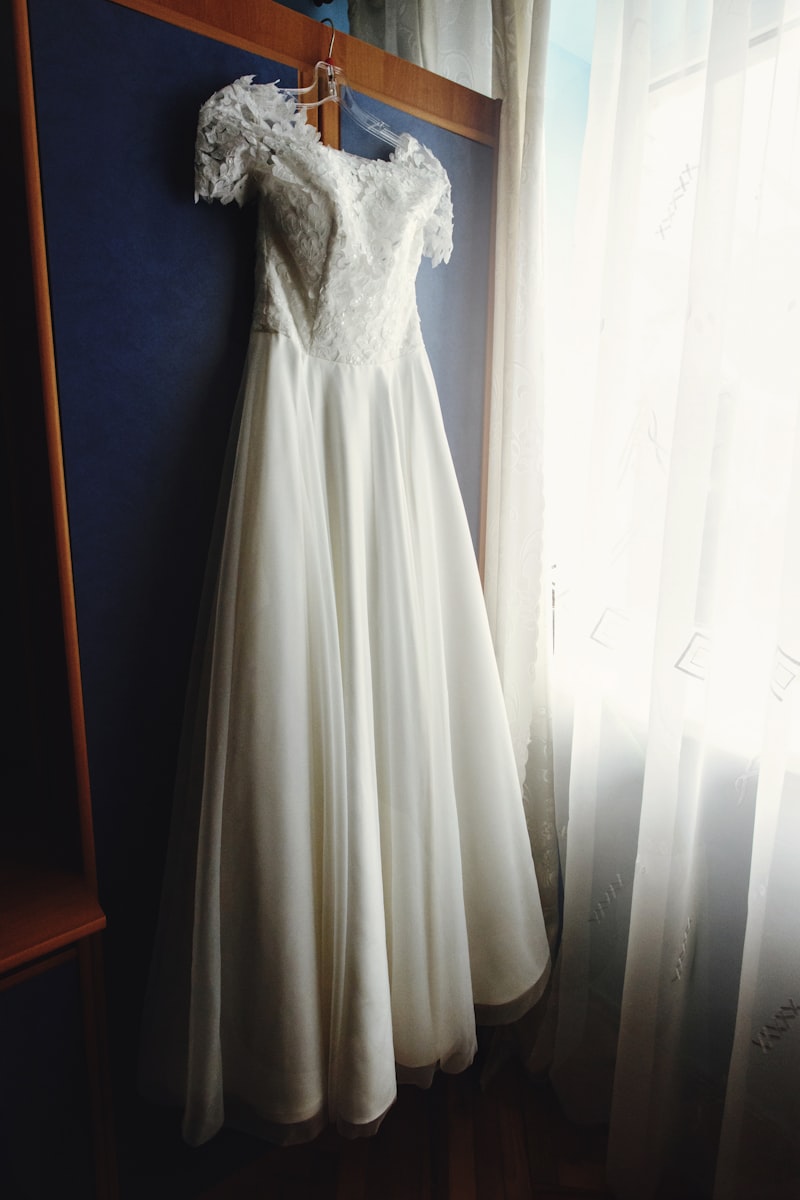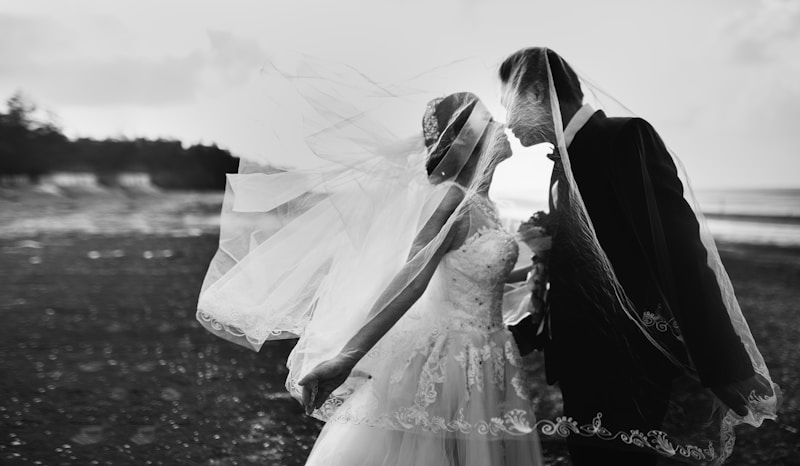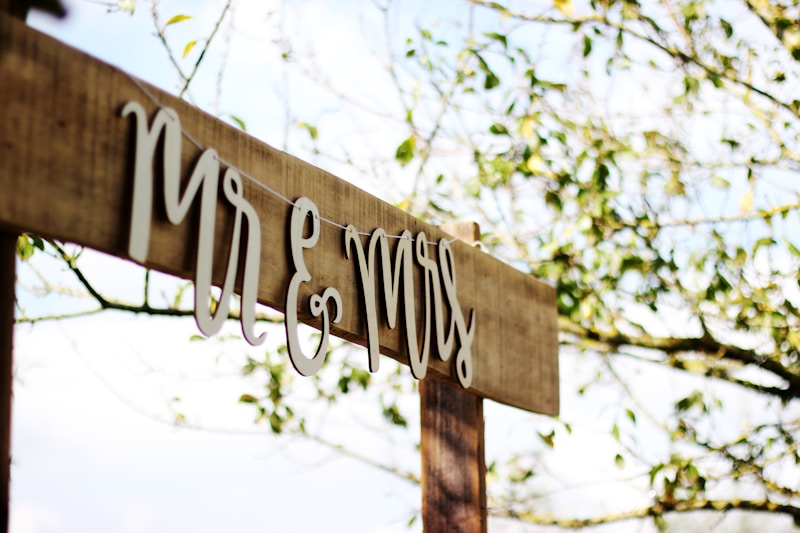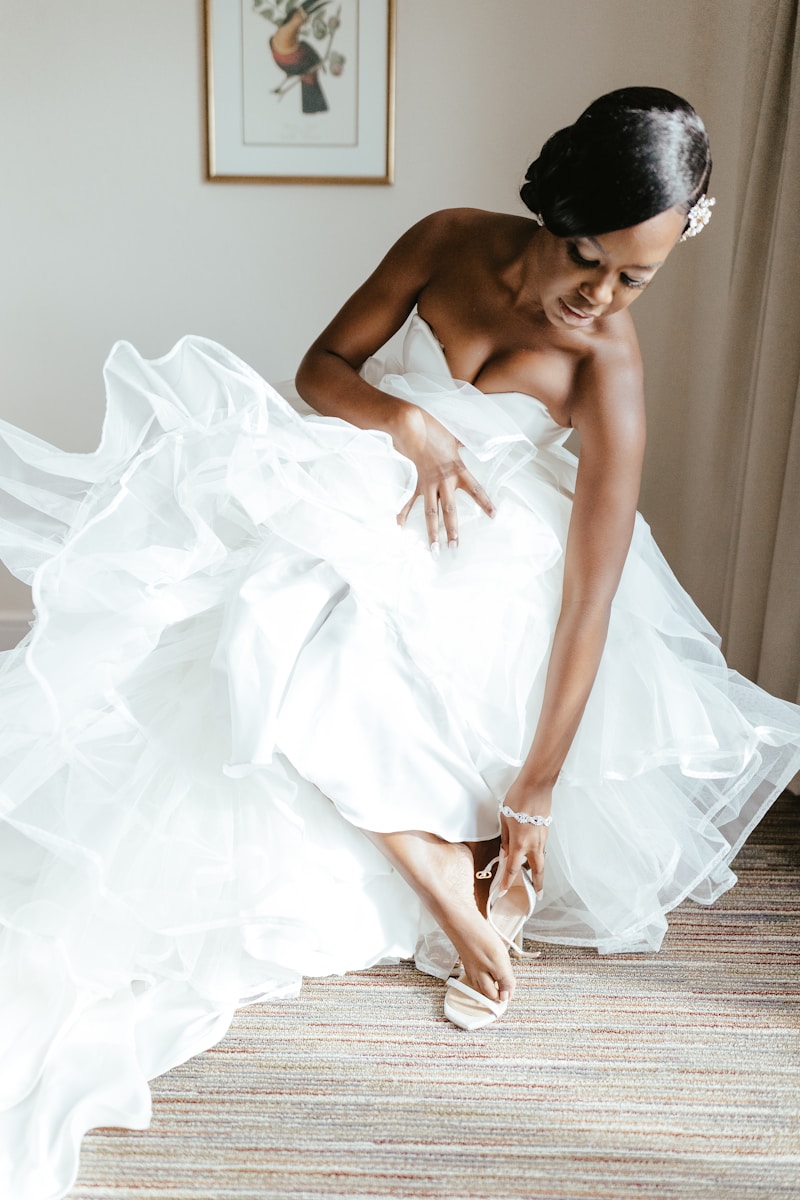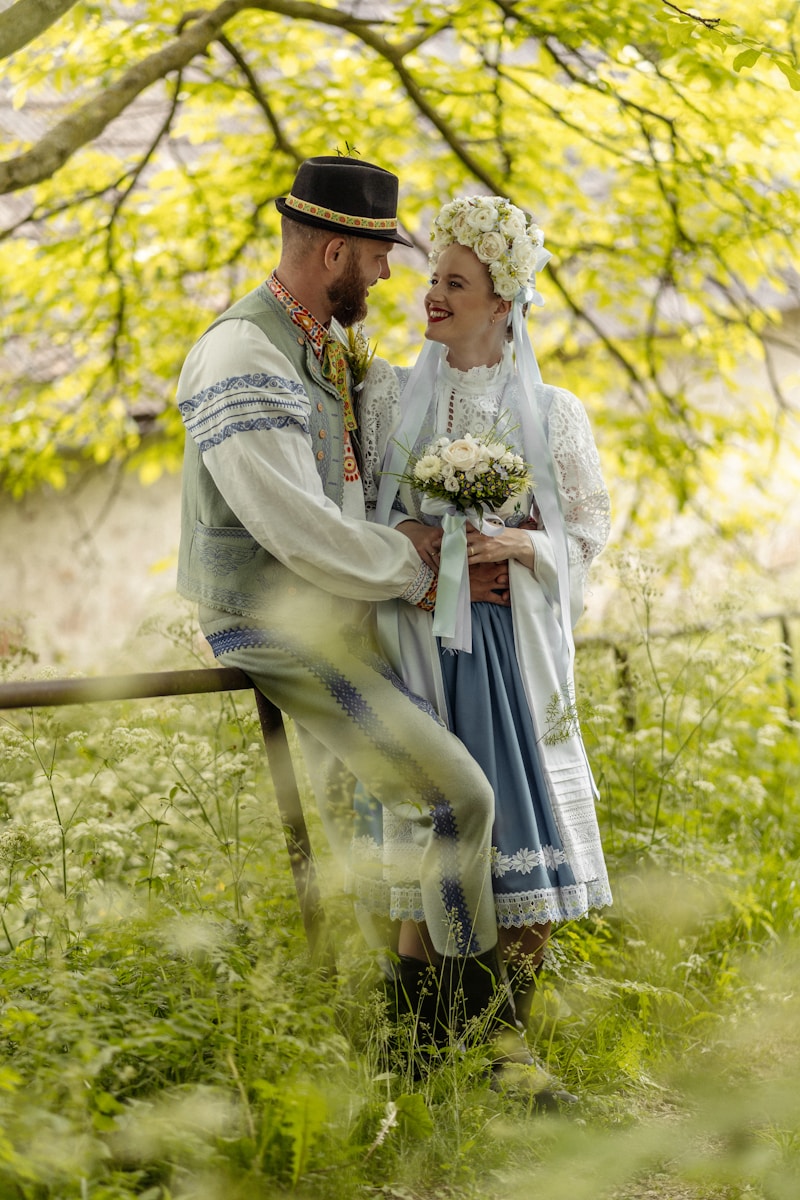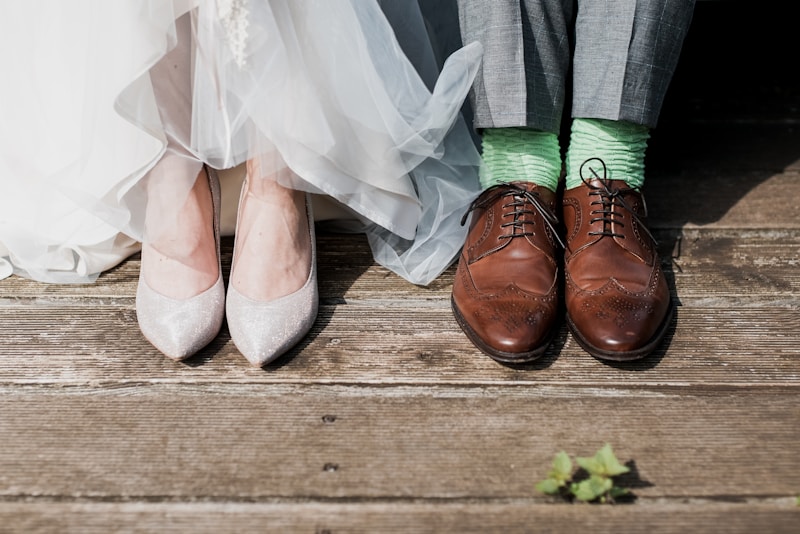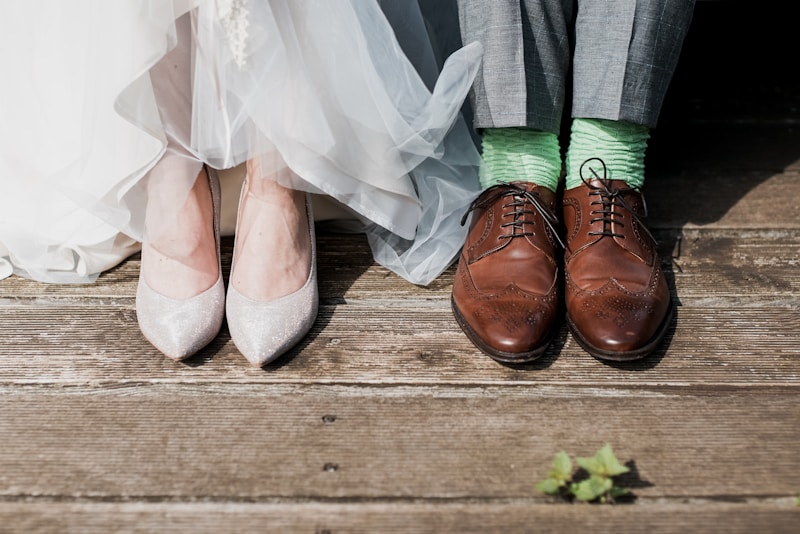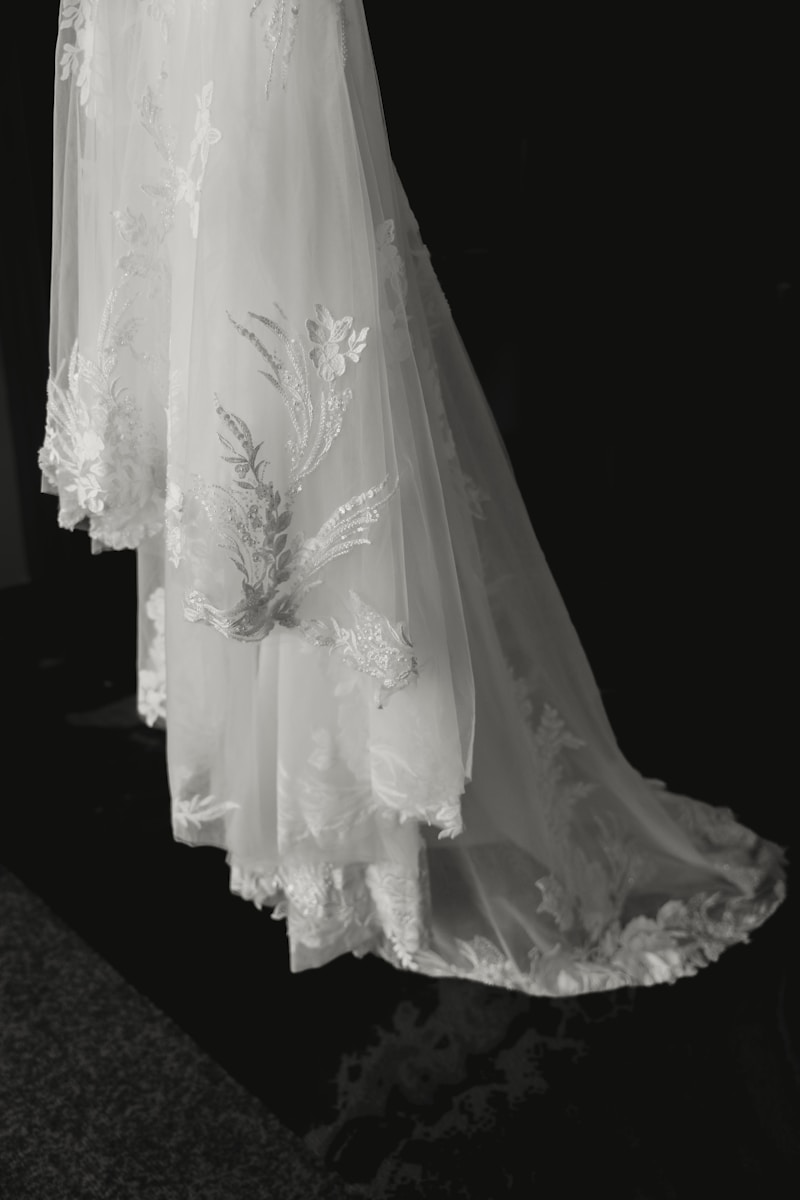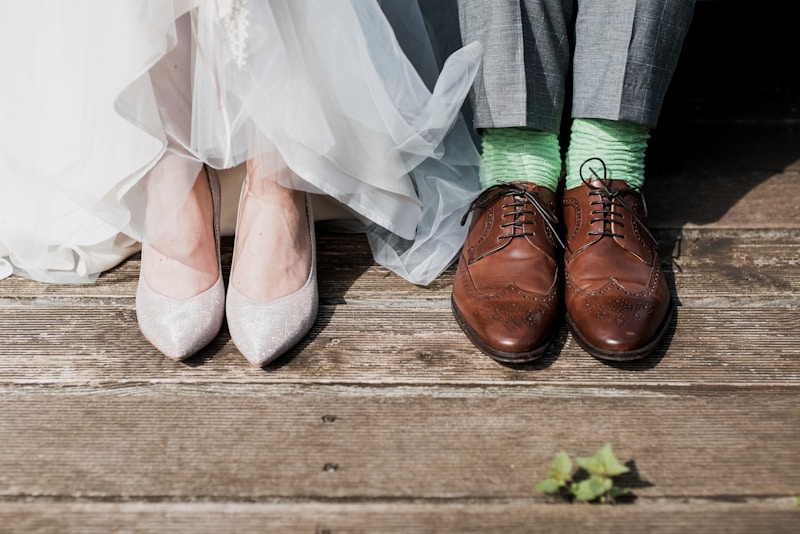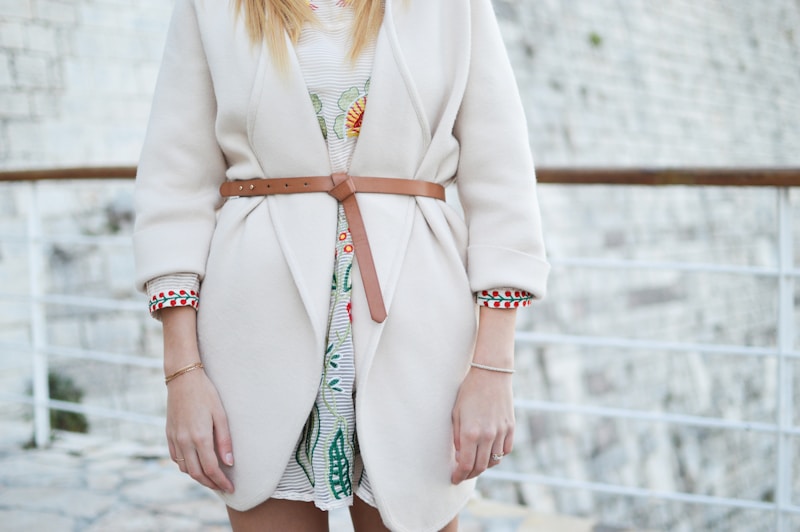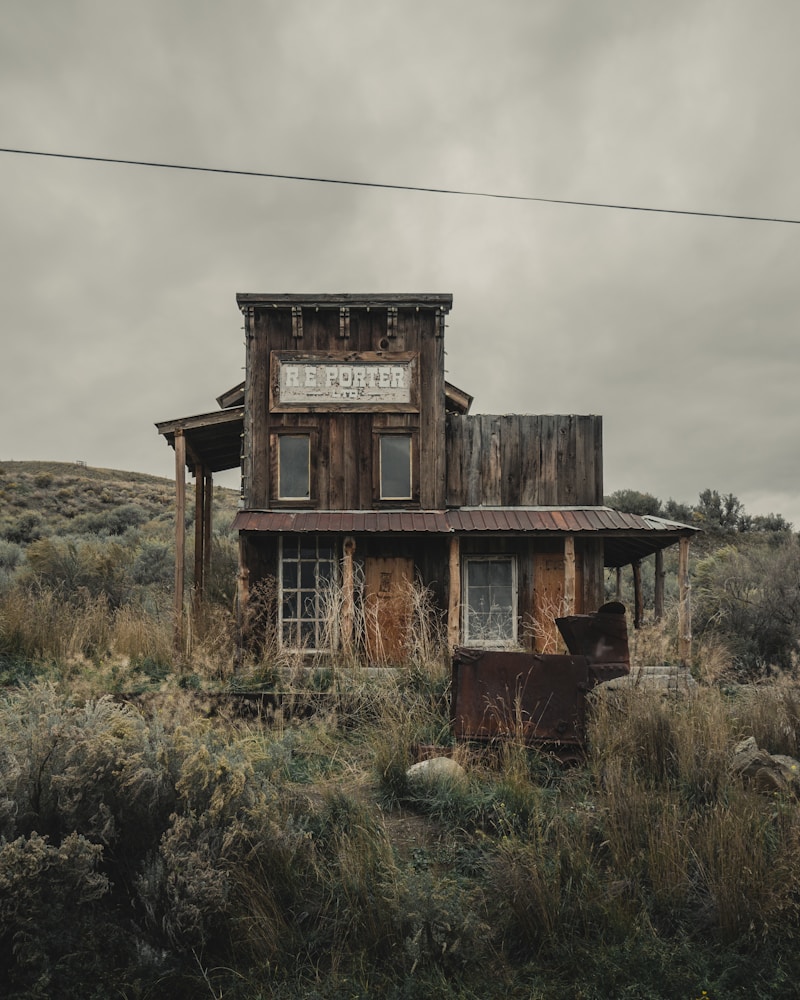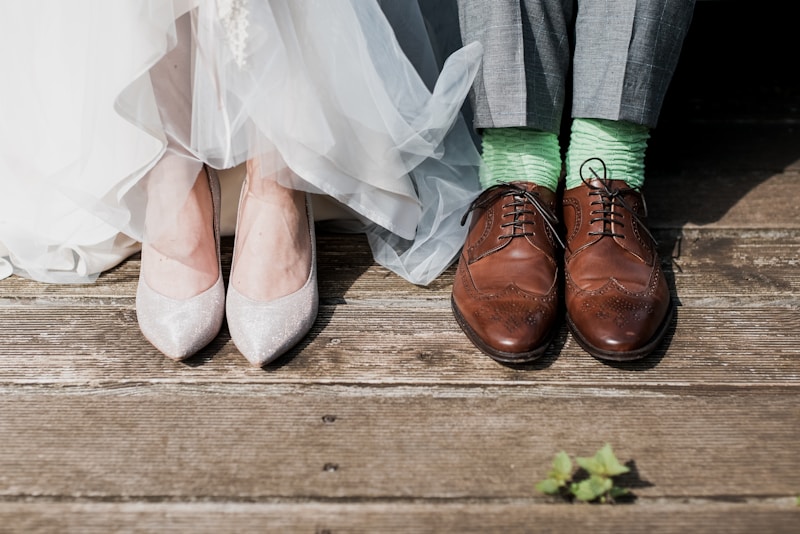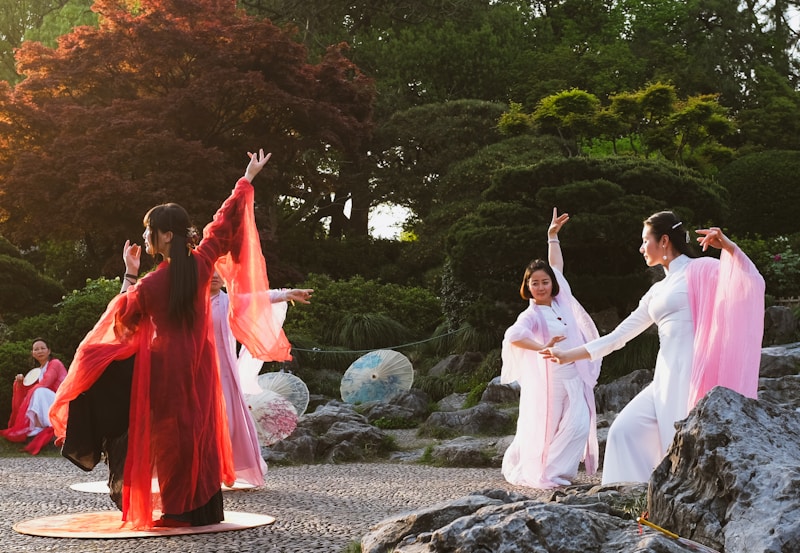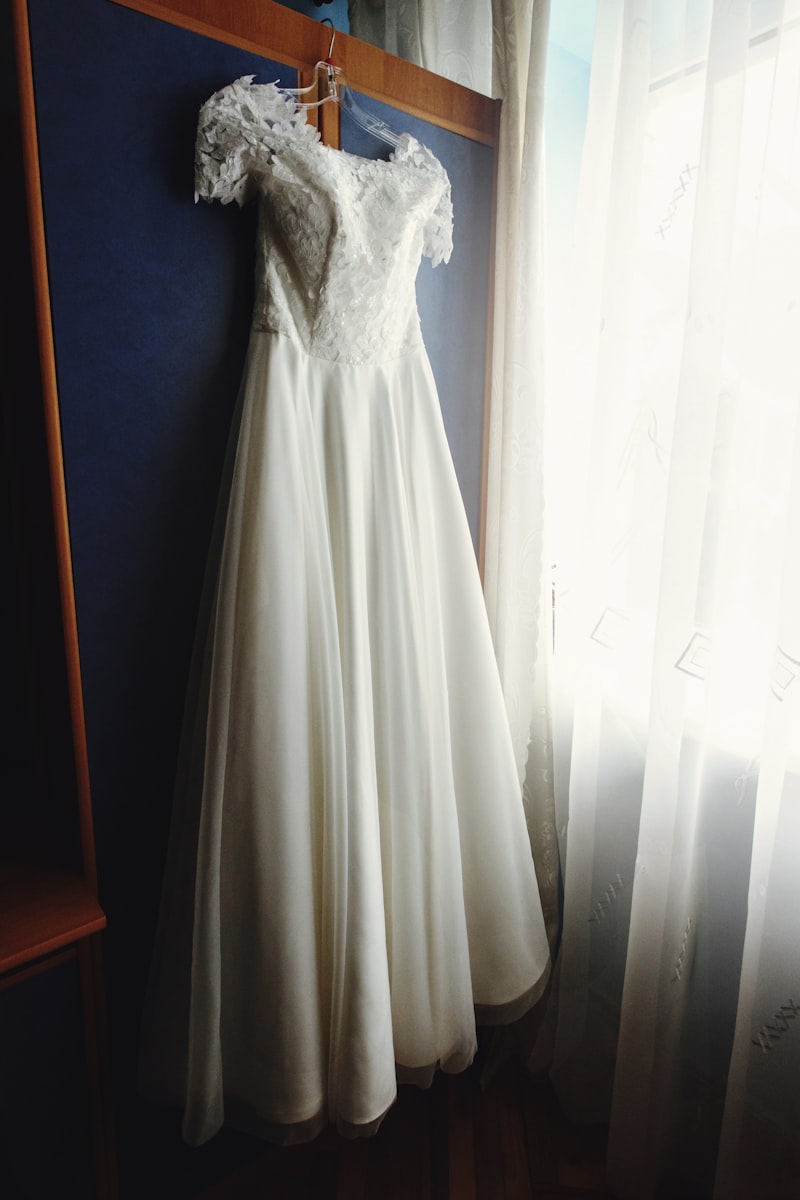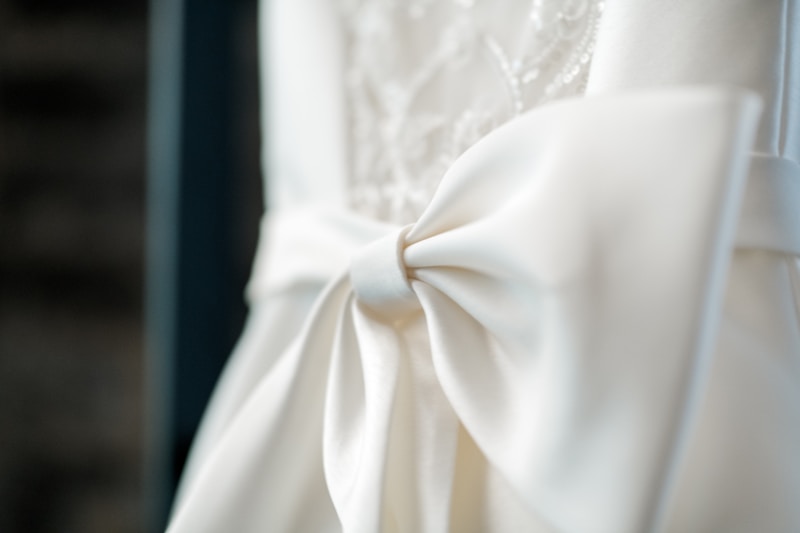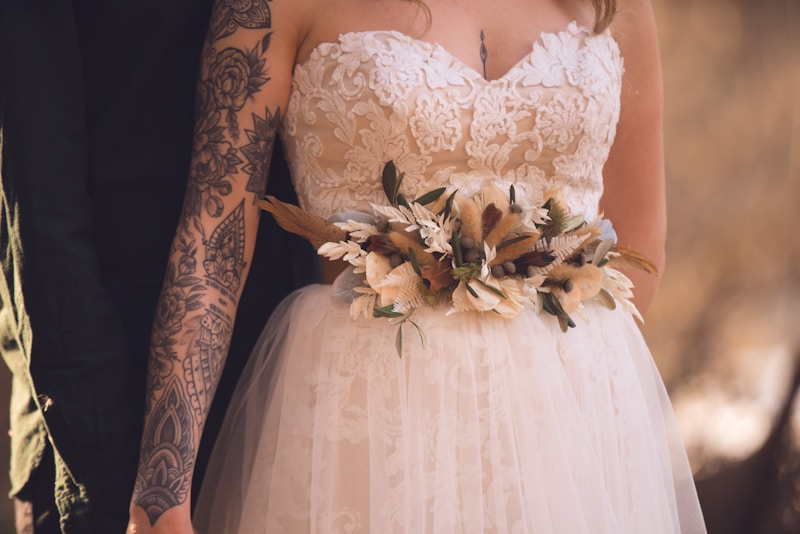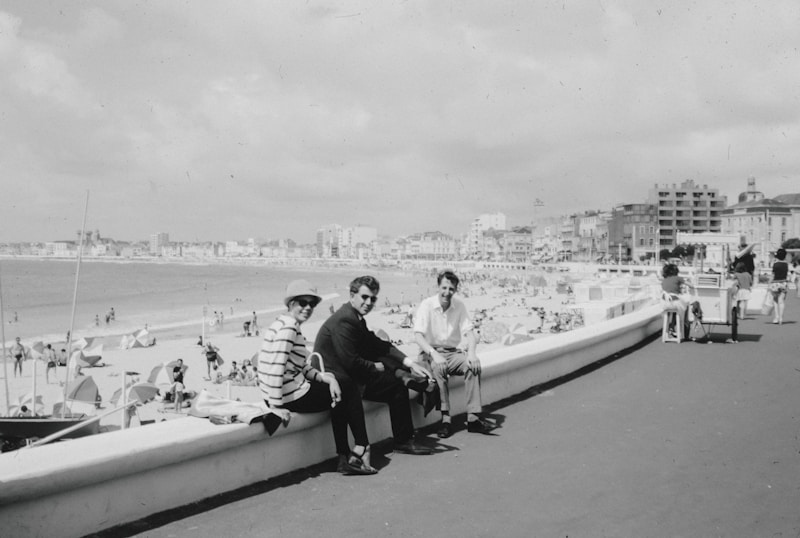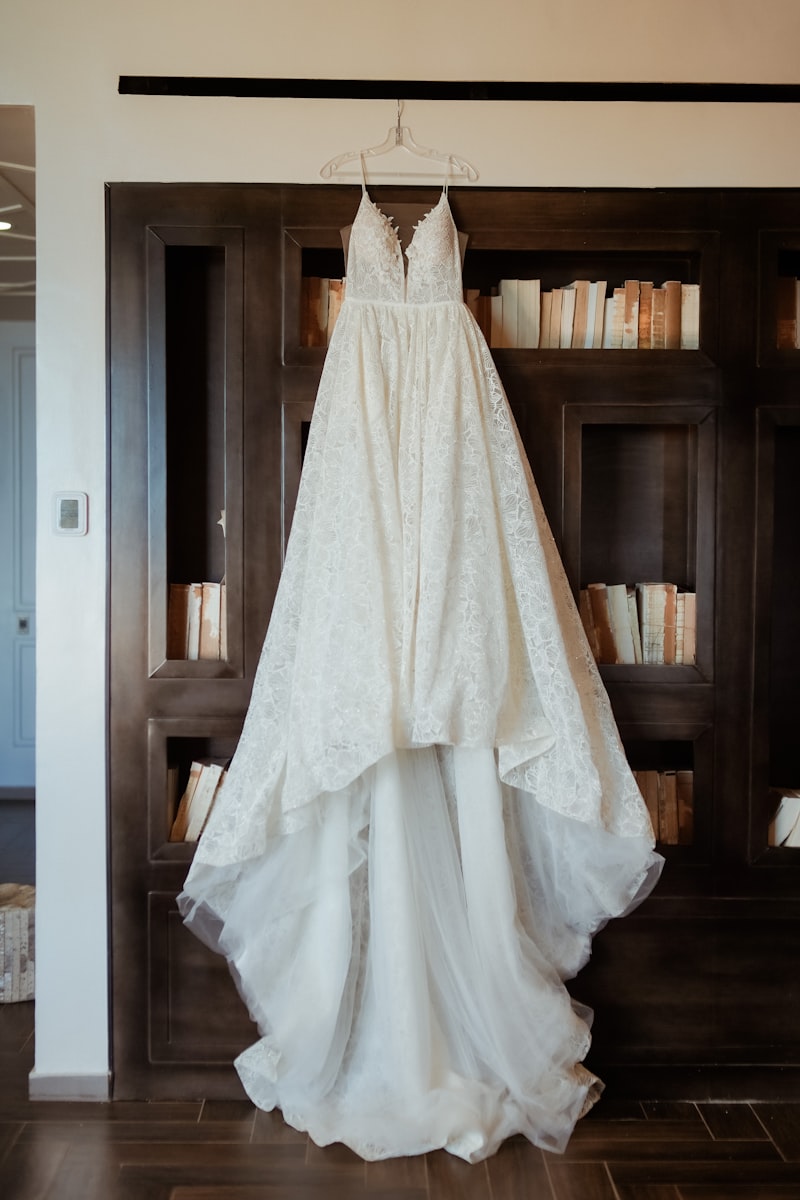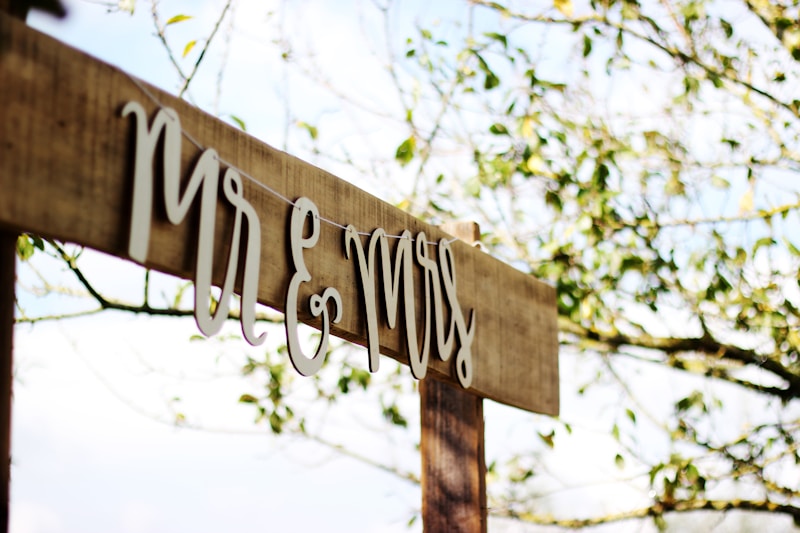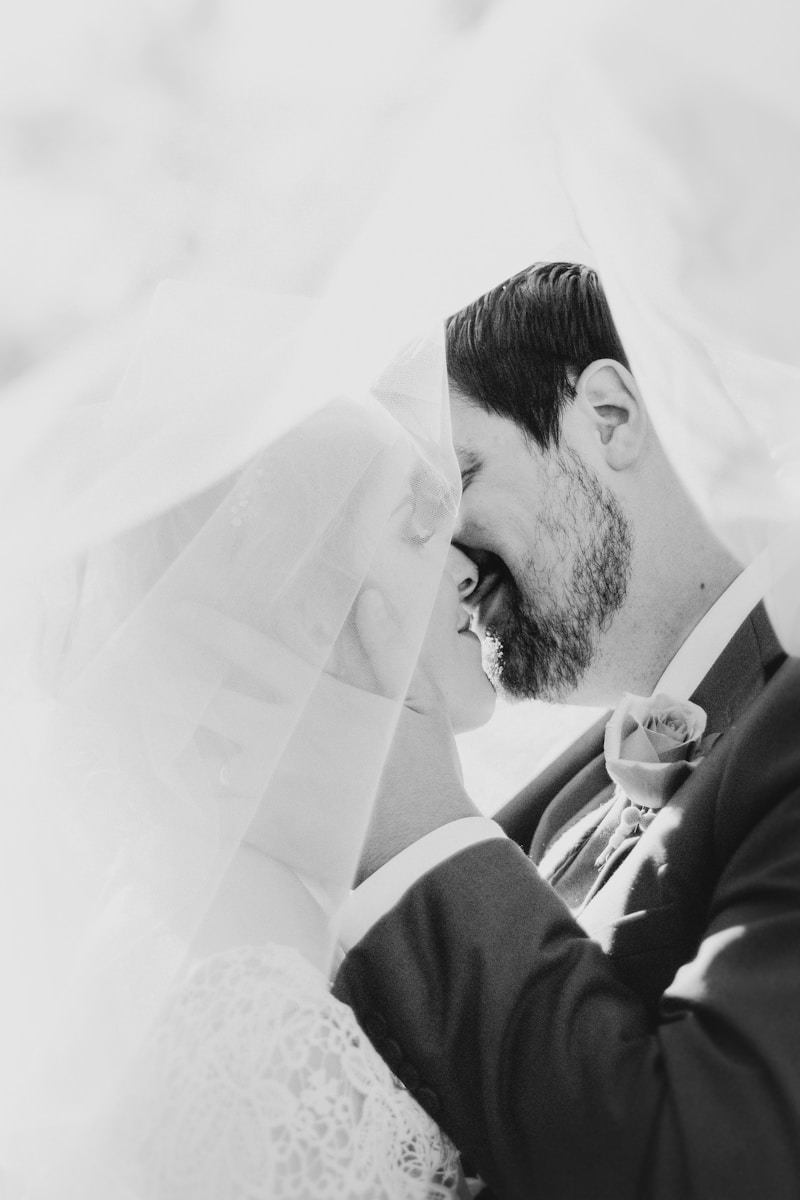The Role of Fabric Choice in Wedding Dresses: Crafting the Perfect Look for Your Special Day
Choosing the right fabric for your wedding dress is one of the most crucial decisions a bride will make on her journey to the altar. The fabric not only dictates the overall look and feel but also plays a vital role in how comfortable a bride will be throughout her big day. In this article, we will explore the various fabrics available for wedding dresses, their unique qualities, and how they can enhance your bridal style.Understanding Wedding Dress FabricsWedding dresses are made from a diverse range of fabrics, each offering different aesthetic qualities, comfort levels, and drape. Here are some common fabrics used in wedding gowns:FabricCharacteristicsBest ForSatinLuxurious, glossy finish; smooth textureClassic and formal weddingsTulleLightweight and airy; often layered for volumeBall gowns and romantic stylesChiffonSoft, sheer, and floaty; drapes beautifullyDestination weddings or outdoor ceremoniesLaceIntricate patterns; adds elegance and textureTraditional and vintage-inspired gownsorganzaStiff and crisp; provides structureStructured silhouettes and layered skirtsThe Elegance of SatinSatin is synonymous with luxury and elegance. Known for its smooth texture and shiny finish, satin wedding dresses are ideal for formal ceremonies. The fabric's weight allows it to drape beautifully, enhancing the silhouette of the bride. Satin is also highly versatile, suitable for various styles, from A-line to mermaid. However, one must consider the climate; satin can be heavy, making it...
Modern Interpretations of Traditional Wedding Garments: A Fusion of Heritage and Style
IntroductionThe celebration of love and commitment is embodied in wedding ceremonies worldwide, with traditional garments playing a pivotal role in these cherished events. In recent years, the rise of modern interpretations of traditional wedding garments has sparked interest and creativity among brides, grooms, and designers alike. This article explores the evolution of these garments, how they are being reimagined today, and the cultural significance behind them. What Are Traditional Wedding Garments?Traditional wedding garments vary significantly across cultures, each holding unique meanings and symbols. Let's take a closer look at some examples from around the world: Cultural RegionTraditional GarmentSignificanceChinaQipao / CheongsamSymbol of purity and prosperityIndiaLehenga / SareeRepresents femininity and graceScotlandKiltSignifies clan heritage and identityJapanKimonoReflects tradition and cultural depthThese garments are not only a celebration of individual cultures but also serve as a connecting thread between past and present, allowing couples to honor their heritage.The Shift Towards Modern InterpretationsModern interpretations of traditional wedding garments often blend historical elements with contemporary design, resulting in a diverse array of styles and expressions. Couples today are more inclined to personalize their wedding attire, making it reflective of their unique tastes and backgrounds.Modern influences on these traditional garments can include:Fabr...
Materials and Textures That Defined Wedding Dresses Through Time
When it comes to wedding dresses, the evolution of materials and textures is a journey through history that reflects not only fashion but also cultural shifts and technological advancements. From royal courts to modern-day ceremonies, the fabric choices and embellishments of wedding gowns have transformed significantly. This article explores the various materials and textures that have defined wedding dresses throughout time, providing insights into their meanings and influences.The Historical Significance of Wedding Dress MaterialsWedding dresses have always held great significance in various cultures, often symbolizing purity, wealth, and status. The choice of materials used in these dresses has not only been a matter of aesthetics but also of social implications.Time PeriodMaterials UsedSignificanceMedieval Era (5th - 15th Century)Silks, Velvets, BrocadesSymbolized wealth and social statusRenaissance (14th - 17th Century)Silk Taffeta, LaceIntroduced the concept of personalized stylesVictorian Era (19th Century)White Satin, Tulle, OrganzaMarked the popularity of the white wedding dressModern Era (20th Century - Present)Chiffon, Crepe, JerseyEmphasized comfort and individualityThe Evolution of Wedding Dress TexturesThe texture of a wedding dress is as important as its fabric. Different textures can evoke various emotions and enhance the overall aesthetic of the gown. Let’s delve into the textures that have made waves in wedding dress design through the ages.1. Luxurious Silk...
Evolution of Bridal Styles Through History: An In-Depth Exploration
Weddings are significant occasions that transcend cultural and geographical boundaries, symbolizing love, commitment, and the integration of two lives. One of the most captivating aspects of weddings is the evolution of bridal styles through history. This journey reflects profound societal changes, fashion trends, and cultural influences across different time periods. In this article, we will delve into the various bridal styles from ancient times to contemporary trends, highlighting key milestones along the way and providing insights on how these styles have evolved.The Origins of Bridal FashionBridal fashion can be traced back to ancient civilizations, where the appearance of the bride was often influenced by cultural beliefs and practices. In ancient Rome, brides wore tunics, symbolizing purity and fertility. The color white, which is now synonymous with weddings in many cultures, wasn't adopted until much later.Bridal Attire in Ancient Greece and RomeRegionBridal AttireSymbolismAncient GreeceSimple dresses, often in white or light colorsPurity and simplicityAncient RomeWoolen tunics, with brides often veiledFertility and protective spiritsIn both ancient Greece and Rome, the significance of the bride’s attire was deeply rooted in the prevailing customs of the time. Brides were often adorned with accessories such as garlands or crowns made from herbs and flowers, believed to ward off evil spirits.The Influence of the Middle Ages on Bridal StylesThe Middle Ages brought abou...
Exploring Queen Victoria’s Influence on Bridal Wear: A Timeless Legacy
IntroductionQueen Victoria, who reigned over the United Kingdom from 1837 to 1901, is not only remembered for her significant contributions to British history but also for her lasting impact on fashion, particularly bridal wear. Her choice to wear a white wedding gown for her marriage to Prince Albert in 1840 set a trend that transformed traditional bridal attire. In this article, we will explore the influence of Queen Victoria on bridal fashion, the evolution of wedding dresses through the ages, and the cultural significance of these changes. We will also delve into the modern interpretations of Victorian bridal wear.The Birth of the White Wedding DressBefore Queen Victoria's wedding, brides typically wore their best dresses, irrespective of color. In a bold move, she opted for a white satin gown, adorned with Honiton lace, which symbolized purity and simplicity. This decision was revolutionary and marked a shift in how weddings were perceived and celebrated.The Legacy of a TrendsetterQueen Victoria's choice compelled countless brides to follow suit. The popularity of white wedding dresses skyrocketed, leading to a fashion revolution in the realm of bridal wear. By the end of the Victorian era, white had become synonymous with weddings, establishing a tradition that is still predominant today. This section summarizes the core elements of Queen Victoria's influence on bridal wear:YearBridal Wear TrendDescription1840White Wedding DressQueen Victoria weds Prince Albert in a whi...
Exploring Ancient Roman Wedding Attire: A Journey Through Time
Introduction to Ancient Roman Wedding AttireWedding ceremonies have been an integral part of human culture for centuries, with diverse customs and traditions reflecting the values and beliefs of different societies. One fascinating aspect of these traditions is the attire worn during weddings. In Ancient Rome, wedding attire was not merely a fashion statement; it was rich with symbolism and tradition, reflecting the importance of marriage in Roman society. In this article, we will delve deep into the intricacies of Ancient Roman wedding attire, exploring the garments worn, their meanings, and how they have influenced modern wedding fashions.Traditional Garments of the Bride and GroomIn ancient Rome, both brides and grooms adorned themselves in specific garments that symbolized their commitment and social status. The wedding attire was often luxurious and embellished, showcasing the wealth of the families involved in the union.The Bride's AttireThe bride's attire was central to Roman wedding ceremonies. Her garments typically included:Stola: The stola was a long, flowing dress worn by Roman women, symbolizing their status as married women. It was often made of fine fabrics and decorated with intricate designs. The stola was belted at the waist to emphasize the figure.Palla: The palla was a large shawl or cloak worn over the stola. It was an essential accessory, providing modesty and warmth. The palla could be draped over the shoulders in various styles, showcasing personal tas...
Timeless Elements in Wedding Dress Design: Crafting the Perfect Bridal Look
When it comes to wedding dress design, the quest for the perfect gown is filled with excitement and often a bit of anxiety. The choices are seemingly endless, but understanding the timeless elements in wedding dress design can simplify this journey. In this article, we will explore essential features that have endured through the ages, ensuring that your wedding dress not only stands the test of time but also reflects your personal style.Understanding Timeless ElementsWedding dresses have evolved over the years, yet certain elements remain eternal. From classic silhouettes to certain fabrics and embellishments, these key components contribute to the beauty and elegance of wedding gowns. Let's delve into these timeless elements that many brides gravitate towards.Classic SilhouettesThe silhouette of a wedding dress is one of the most critical aspects influencing its overall appearance. Here are some classic silhouettes that have remained popular amongst brides:SilhouetteDescriptionA-lineFlattering for various body types, it features a fitted bodice and flows down to the ground, resembling the capital letter 'A'.Ball GownThis fairy-tale style features a fitted bodice and a full skirt that adds drama, perfect for traditional weddings.MermaidFitted through the bodice, hips, and thighs, it flares out at the knee, showcasing the bride's curves.SheathDesigned to closely follow the body's natural shape, this silhouette creates a sleek and sophisticated look. Quality FabricsThe fabric ...
Exploring Historical Inspirations for Contemporary Bridal Gowns
Bridal fashion has always been influenced by historical trends, cultural shifts, and iconic figures throughout the ages. With the evolution of styles, contemporary bridal gowns are now more diverse than ever, combining traditional elements with modern flair. This article will delve into the rich tapestry of historical inspirations that shape today's bridal wear, revealing how past styles resonate with current design innovations. Whether you are a bride-to-be or simply an admirer of fashion history, understanding these influences will enrich your perspective on contemporary bridal gowns.Understanding the Historical Influences on Bridal GownsThe concept of a bride's gown has transformed dramatically over centuries. The roots of bridal wear can be traced back to various epochs, each contributing unique elements to what we see today. Some of the most influential periods include:PeriodKey FeaturesVictorian Era (1837-1901)Full skirts, lace details, high necklinesRoaring Twenties (1920s)Dropped waists, flapper styles, intricate beadworkHollywood Glamour (1940s-50s)Elegant silhouettes, dramatic trains, sweetheart necklinesModern Minimalism (2000s onwards)Simplicity, clean lines, and versatile designsEach era not only defines the styles but also reflects the social attitudes and lifestyle changes of the time.Victorian Era: The Foundation of Modern Bridal WearThe Victorian Era heralded a significant shift in bridal fashion, where white became the traditional color for weddings thanks t...
Exploring Rituals and Customs in Ancient Wedding Ceremonies: A Journey Through Time
Weddings are a time-honored tradition across cultures, and throughout history, they have been marked by unique rituals and customs that reflect the values and beliefs of different societies. Today, we will delve into the rich tapestry of rituals and customs in ancient wedding ceremonies, exploring various cultures and how they have shaped the modern wedding practices we see today. The Significance of Rituals in Weddings Rituals are often considered a binding thread in the fabric of human life, especially during significant life events like weddings. They give structure to the ceremony, imbue it with meaning, and connect participants to their cultural heritage. In ancient weddings, these rituals could involve religious, spiritual, or social elements, and varied greatly from one culture to another. Common Elements of Ancient Wedding Ceremonies Almost every culture celebrates marriage with some unique rituals. Interestingly, many of these customs have enduring themes such as the exchange of vows, blessings, and family involvement. Below is a breakdown of notable customs from various ancient cultures. CultureRitual or CustomAncient EgyptMarriage contracts and the presence of two witnesses.Ancient GreeceGroom's procession and the symbolic act of "stealing" the bride.Ancient RomeThe "confarreatio," involving a sacred cake and offerings to the gods.ChinaBridal chair procession and heavy symbolism in the red color.IndiaSeven vows taken around a sacred fire (Saptapadi).Ancient Egypti...
Exploring Victorian Wedding Fashion: A Timeless Elegance
Victorian wedding fashion encapsulates a unique blend of elegance, romance, and historical significance that continues to inspire bridal style today. The Victorian era, which spanned from 1837 to 1901 during the reign of Queen Victoria, was a time of profound change and extravagance in terms of fashion. In this article, we will explore the key elements of Victorian wedding fashion and offer insights into how modern brides can incorporate this enchanting style into their weddings. We will also address common questions regarding Victorian wedding attire and its relevance to contemporary bridal trends.The Historical Context of Victorian Wedding FashionThe roots of Victorian wedding fashion can be traced back to Queen Victoria’s own wedding to Prince Albert in 1840. The choice of a white gown was revolutionary at the time, as brides typically wore colorful dresses that could be worn again. Queen Victoria’s iconic gown inspired countless brides to embrace white, symbolizing purity and innocence. Over the decades, wedding fashion evolved significantly, influenced by various social, economic, and technological changes.Key Elements of Victorian Wedding FashionVictorian wedding fashion is characterized by several distinctive features that set it apart from earlier and contemporary styles. Here are some key elements that define this timeless attire:ElementDescriptionSilhouetteFull skirts supported by crinolines or petticoats, creating a bell-shaped silhouette.FabricsLuxurious materials...
Cross-Cultural Bridal Attire Comparisons: A Global Perspective
Bridal attire has always been a powerful expression of culture, tradition, and individual personality. Across the globe, brides don garments that reflect their heritage, beliefs, and personal style. This article will explore various cross-cultural bridal attire, comparing the distinctive styles and significant meanings behind them. By the end, you will gain insights into how different cultures celebrate love through their unique bridal fashions.The Importance of Bridal Attire Across CulturesBridal attire is not merely a matter of fashion; it carries deep cultural significance. From elaborate ceremonies to understated simplicity, clothing choices can signify societal norms, familial expectations, and personal beliefs. Across many cultures, the wedding dress is a key part of the celebration, showcasing the bride's identity and heritage.Understanding Cultural SignificanceIn many societies, the choice of bridal attire is imbued with tradition. For example, in Western cultures, the white dress symbolizes purity and new beginnings. In contrast, many Eastern cultures prioritize vibrant colors that represent prosperity and happiness.CultureTypical AttireSymbolismWesternWhite DressPurity, New BeginningsIndianRed Saree or LehengaFertility, ProsperityChineseRed QipaoGood Luck, JoyAfricanColorful Traditional DressCelebration, HeritageBridal Attire Comparisons by RegionWestern Bridal AttireIn Western cultures, particularly in North America and Europe, the traditional bridal gown is often ...
Exploring Gender Roles in Historical Wedding Fashion: A Timeless Reflection
Wedding fashion has always been a profound reflection of societal norms, cultural practices, and evolving gender roles throughout history. In this article, we will explore how gender roles have influenced wedding attire over the years, focusing on various historical periods and the contrasting styles that emerged as a reflection of male and female societal expectations. Whether it's the opulent Victorian dresses or the minimalist modern gowns, understanding the evolution of these styles sheds light on the changing perceptions of gender in society.The Historical Context of Wedding FashionWedding ceremonies have existed for millennia, and with them, the accompanying fashion choices that symbolize the union of two individuals. In ancient times, practical considerations often dictated wedding attire, but as societies evolved, so did the significance and complexity of wedding fashion. Let’s take a closer look at how these changes mirror gender roles throughout history.Ancient Times: Practicality Over StyleIn early civilizations, wedding attire was primarily functional. Women often wore garments made from locally sourced materials, while men typically donned simple tunics or robes. The emphasis was not on fashion as we know it but rather on utility and the demonstration of one's social status.The Middle Ages: Symbolism and SeparationAs we transitioned into the Medieval period, wedding fashion began to reflect greater symbolism. Women started to wear embellished gowns that not only ...
Exploring the Elegance of Traditional Chinese Bridal Gowns: A Timeless Fashion Statement
Introduction to Traditional Chinese Bridal GownsFor centuries, traditional Chinese bridal gowns have been a symbol of beauty, elegance, and cultural heritage. These stunning garments are not just attire; they embody the rich history and deep-rooted traditions of Chinese weddings. With intricate designs and vibrant colors, traditional bridal gowns hold special significance for brides and their families. In this article, we will delve into the various styles, cultural meanings, and modern adaptations of traditional Chinese bridal gowns.The Historical Significance of Bridal GownsBridal gowns in China have a history that dates back thousands of years, with each dynasty contributing its unique touch to the garments. In ancient China, a bride’s attire was often dictated by her family's social status and the customs of her region. Generally, traditional Chinese bridal gowns are characterized by their bright colors, ornate embroidery, and luxurious fabrics. Red, representing happiness and good fortune, is the predominant color worn by brides due to its auspicious meanings.Types of Traditional Chinese Bridal Gowns1. Qipao (Cheongsam): This elegant, form-fitting dress has become popular in modern weddings. The qipao features a high collar and a straight silhouette, often adorned with intricate patterns and embroidery.2. Hanfu: A more traditional choice, the Hanfu consists of multiple layers and is characterized by flowing sleeves and a loose-fitting silhouette. This attire reflects the...
Exploring the Symbolism of Color in Bridal Fashion: A Comprehensive Guide
Bridal fashion is an ever-evolving field where tradition meets modernity. One of the most intriguing aspects of bridal fashion is the symbolism associated with color. Different cultures and traditions assign various meanings to colors, influencing wedding attire choices and making them more than just aesthetic preferences. In this article, we delve into the rich world of color symbolism in bridal fashion, exploring how brides can express their individuality and cultural heritage through color.The Significance of Color in Bridal FashionColor plays a crucial role in conveying emotions and setting the mood of an event. In the context of weddings, brides often choose colors that reflect their personality, values, and cultural background. Understanding the symbolism of these colors can help brides and wedding planners make informed decisions about bridal attire and decorations.Common Colors and Their MeaningsColorSymbolismCountries of PopularityWhitePurity, Innocence, New BeginningsWestern countries (USA, Canada, UK)RedLove, Passion, ProsperityChina, India, African culturesBlueTranquility, Loyalty, TrustNorth America, Western EuropePinkRomance, Femininity, SweetnessWestern countries, JapanBlackElegance, Mystery, RebellionModern Western culture, EuropeFinding Your Color: Personal and Cultural RelevanceWhen choosing a bridal color, it’s essential to consider both personal preferences and cultural significance. For example, while white is often seen as the standard color for weddings...
The Rise of Minimalist Bridal Fashion in Modern Weddings
Introduction to Minimalist Bridal FashionIn recent years, the world of bridal fashion has witnessed a significant transformation. Gone are the days when extravagant gowns and opulent decorations ruled the bridal runway. Instead, minimalist bridal fashion has taken center stage, appealing to modern brides looking for sophistication, elegance, and functionality.Understanding Minimalism in Bridal FashionMinimalism in bridal fashion emphasizes simplicity, clean lines, and understated elegance. This style is not just a trend; it is a reflection of a broader cultural shift towards minimalist aesthetics in various aspects of life. Modern couples are increasingly drawn to the idea of less being more, focusing on meaningful experiences over extravagant displays.Characteristics of Minimalist Bridal FashionMinimalist bridal fashion can be defined by several key characteristics: Simple Silhouettes: A-line dresses, sheath dresses, and column gowns that enhance a bride's natural beauty without overpowering it. Neutral Color Palettes: Whites, creams, soft pastels, and other muted shades dominate minimalist designs. Focus on Fabric: Quality over quantity—luxurious materials like silk, satin, and organic cotton are preferred. Thoughtful Details: Subtle embellishments, such as delicate lace accents or understated sequins, that add character without being overwhelming.Why Minimalism is Gaining Popularity Among Modern BridesSeveral factors contribute to the rise of minimalist bridal ...
Exploring the Historical Significance of White Wedding Dresses
The Evolution of White Wedding Dresses: A Timeless TraditionWhen we think of weddings, the image of a bride in a stunning white dress often comes to mind. But have you ever stopped to ponder the historical significance of white wedding dresses? While they are now a symbol of purity and elegance, the tradition of wearing white has a rich and layered backstory that reflects changing societal norms, cultural influences, and personal choices. In this article, we will explore the origins, symbolism, and modern interpretations of white wedding dresses.Historical Background: The First White Wedding DressThe white wedding dress is most famously credited to Queen Victoria of the United Kingdom. In 1840, she wore a white gown made of silk satin to marry Prince Albert, a choice that defied the traditional preference for ornate dresses of rich colors. This pivotal moment in history marked the beginning of the trend that continues to dominate weddings today.The Symbolism of ColorBefore Queen Victoria's influence, brides typically wore their best dresses, regardless of color. The color white was not commonly associated with weddings until the 19th century. Color symbolism varies widely across cultures, and white, in the context of weddings, has come to symbolize purity, innocence, and new beginnings. However, it also reflects societal expectations and evolving views on femininity and marriage.ColorSymbolismWhitePurity, innocenceRedLove, passion (common in Chinese weddings)BlueStability, lo...
The Impact of Societal Changes on Wedding Attire Over Time
Weddings are one of the most cherished rituals across cultures, bringing together not just two individuals but their families and friends. The attire chosen by couples for their wedding day is often a reflection of their personal style, cultural background, and the societal norms of the time. In this article, we will explore the impact of societal changes on wedding attire over time, highlighting significant fashion trends and cultural shifts that have influenced what people wear on their special day.Historical Overview of Wedding AttireThroughout history, wedding attire has been influenced by various elements, including class, religion, and cultural traditions. The significance placed on wedding attire has evolved, revealing a great deal about society's values at different points in time.Time PeriodCommon AttireSocietal InfluencesEarly 20th CenturyLong, flowing dresses for brides, dark suits for groomsVictorian ideals and class distinctions1940s-1950sA-line dresses, military uniformsPost-war glamour, wartime simplicity1970sBohemian styles, bold colorsCultural revolution, individualism2000s-PresentDiverse styles, non-traditional attireGender fluidity, globalizationThe Influence of Economic FactorsEconomic conditions have a significant impact on wedding attire. For instance, during economic downturns, couples may opt for simpler, less expensive outfits. Conversely, in prosperous times, elaborate and extravagant wedding gowns and suits often become the norm. For example, during...
Exploring Artisan Craftsmanship in Historical Bridal Fashion: A Timeless Legacy
Introduction to Artisan Craftsmanship in Bridal FashionThe world of bridal fashion is a captivating realm where tradition meets artistry. Artisan craftsmanship plays a pivotal role in shaping the aesthetics of historical bridal attire, marrying intricate designs with cultural significance. This article delves into the rich history of bridal fashion, highlight the importance of artisan craftsmanship, and explore how it has evolved over the centuries.The Roots of Bridal FashionBridal fashion dates back centuries, with each era contributing unique styles and influences. From the simple white gowns of the Victorian era to the extravagant creations of the 21st century, bridal fashion is a reflection of societal norms, cultural practices, and artistic expression. The early bridal gowns were often made by skilled artisans who poured their heart and soul into every stitch.Significance of Artisan CraftsmanshipArtisan craftsmanship refers to the skilled handmade processes that involve traditional techniques passed down through generations. In historical bridal fashion, this craftsmanship is essential, as it not only enhances the quality of the garments but also embeds stories and traditions into the fabric.Historical EraNotable FeaturesCraftsmanship TechniquesVictorian EraElaborate lacework, high collarsHand embroidery, fabric manipulation1920s Roaring TwentiesFlapper-inspired, beaded embellishmentsHand beading, drapingModern EraSimplified silhouettes, mix of vintage/recent stylesDigit...
Exploring Renaissance Wedding Gown Aesthetics: A Timeless Elegance for the Modern Bride
Understanding Renaissance Wedding Gown Aesthetics The Renaissance period, spanning from the 14th to the 17th centuries, is renowned for its remarkable influence on art, architecture, and fashion. As modern brides seek to incorporate historical elegance into their wedding day, the Renaissance wedding gown aesthetics have become increasingly popular. This article explores the elements, styles, and inspirations behind Renaissance wedding gowns, equipping brides with the knowledge to make informed choices for their special day. The Evolution of Renaissance Wedding Gowns During the Renaissance, wedding gowns were not just clothing; they were elaborate expressions of wealth and status. This era witnessed a transformation in fashion, moving from the simple designs of the Middle Ages to more opulent and intricate garments. Ruffles, lace, and rich fabrics such as silk and velvet were hallmarks of Renaissance fashion. Brides can draw from this rich history to find elements that resonate with their personal style. Key Features of Renaissance Wedding Gowns FeatureDescriptionFabricsLuxurious materials like silk, satin, and brocade.ColorDeep jewel tones and regal colors, often adorned with gold or silver accents.SilhouetteFitted bodices with full skirts, creating a dramatic and flattering look.EmbellishmentsIntricate embroidery, lace, and beading to enhance the gown's beauty.These features not only reflect the rich history of the Renaissance but also cater to the aesthetic desires of toda...
The Significance of Veil Styles Across Different Cultures
Understanding Veil Styles: A Cultural JourneyVeils have been worn for millennia, serving various purposes and holding deep cultural significance across the globe. From religious connotations to societal norms, the styles of veils vary widely, reflecting the unique practices and beliefs of different cultures.The Historical Context of VeilsVeils have a rich history, dating back to ancient civilizations, where they were often symbols of modesty, class, and sometimes even religious burdens. The evolution of veil styles is closely tied to social and cultural shifts, in addition to the influences of fashion and personal identity.Veil Styles Through the AgesCultureVeil StyleSignificanceAncient RomeFlammeumWorn by brides, symbolizing purityMiddle Eastern CulturesHijabIndicates modesty and privacyIndian CultureGhoonghatSignifies respect and traditionWestern FashionWedding VeilRepresents the bride's journey into a new lifeModern-Day Interpretations of VeilsIn contemporary society, the style and perception of veils continue to evolve. While some cultures maintain traditional practices, others are adapting these styles to fit modern aesthetics, making veils symbols of empowerment rather than restriction.The Veil as a Symbol of IdentityVeils can serve as a powerful statement of identity. For instance, many Muslim women wear Hijabs as a declaration of faith and a personal choice, embracing their cultural heritage. In places like India, the ghoonghat represents a woman's connection to her f...
